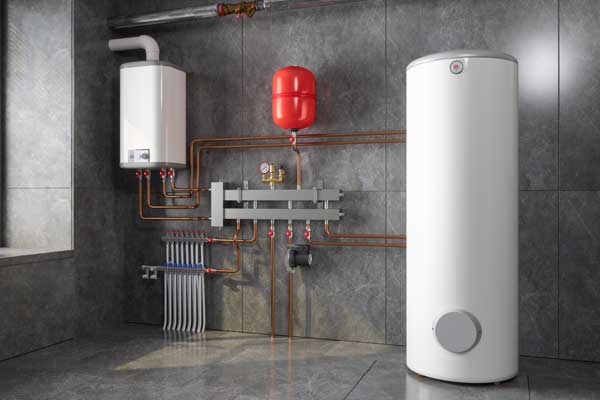Efficient Strategies for Maintaining Your Home's Hot Water SystemSteps on How to Care for Your Home's Hot Water System Effectively
Efficient Strategies for Maintaining Your Home's Hot Water SystemSteps on How to Care for Your Home's Hot Water System Effectively
Blog Article
The article author is making several great pointers on How to Maintain Your Water Heater & Prolong its Life as a whole in this great article down below.

Warm water is necessary for day-to-day convenience, whether it's for a refreshing shower or cleaning recipes. To ensure your hot water system runs efficiently and lasts longer, regular maintenance is essential. This post supplies sensible pointers and understandings on just how to keep your home's warm water system to avoid disruptions and costly repairs.
Intro
Keeping your home's warm water system could appear overwhelming, however with a couple of basic steps, you can ensure it operates smoothly for years to come. This guide covers everything from understanding your warm water system to do it yourself upkeep ideas and understanding when to employ expert assistance.
Significance of Maintaining Your Warm Water System
Normal upkeep not only extends the lifespan of your hot water system yet additionally guarantees it operates efficiently. Neglecting maintenance can bring about lowered effectiveness, higher power expenses, and even early failing of the system.
Indications Your Hot Water System Needs Upkeep
Understanding when your hot water system needs focus can stop major issues. Keep an eye out for indicators such as inconsistent water temperature, strange sounds from the heating unit, or rustic water.
Flushing the Hot Water Heater
Flushing your hot water heater eliminates sediment build-up, enhancing efficiency and lengthening its life.
Monitoring and Replacing Anode Rods
Anode poles stop corrosion inside the container. Checking and replacing them when worn is essential.
Complex Concerns Requiring Specialist Assistance
Examples consist of major leakages, electrical problems, or if your hot water heater is regularly underperforming.
Regular Professional Upkeep Advantages
Specialist maintenance can consist of complete examinations, tune-ups, and guaranteeing conformity with security criteria.
Examining and Readjusting Temperature Setups
Changing the temperature setups ensures ideal performance and security.
DIY Tips for Maintenance
You can do several upkeep jobs yourself to maintain your warm water system in leading condition.
Looking for Leaks
On a regular basis evaluate pipes and links for leaks, as these can result in water damages and higher expenses.
Recognizing Your Hot Water System
Prior to diving into upkeep tasks, it's valuable to recognize the basic parts of your hot water system. Normally, this consists of the hot water heater itself, pipes, anode rods, and temperature level controls.
Monthly Maintenance Tasks
Normal monthly checks can assist capture small issues before they rise.
Testing Stress Relief Valves
Evaluating the stress safety valve ensures it works correctly and stops too much pressure buildup.
Protecting Pipelines
Shielding hot water pipes decreases warm loss and can conserve power.
When to Call a Professional
While DIY upkeep is helpful, some concerns require professional competence.
Final thought
Routine upkeep of your home's warm water system is crucial for efficiency, longevity, and cost savings. By complying with these ideas and recognizing when to look for specialist aid, you can ensure a dependable supply of hot water without unforeseen interruptions.
How to Maintain an Instant Hot Water Heater
Before tinkering with your hot water heater, make sure that it’s not powered on. You also have to turn off the main circuit breaker and shut off the main gas line to prevent accidents. Also turn off the water valves connected to your unit to prevent water from flowing into and out of the appliance. 2. When you’re done, you have to detach the purge valves’ caps. These look like the letter “T” and are situated on either side of the water valves. Doing so will release any pressure that has accumulated inside the valves while at the same time avoid hot water from shooting out and burning your skin. 3. When the purge valves’ caps are removed, you have to connect your hosing lines to the valves. Your unit should have come with three hoses but if it didn’t, you can purchase these things from any hardware or home repair shops. You can also get them from retail stores that sell water heating systems. Read the user’s manual and follow it to complete this task properly. When the hosing lines are connected, open the purge port’s valves. 4. You should never use harsh chemical cleaners or solutions when cleaning your unit. Make use of white vinegar instead. It should be undiluted and you’ll probably use about 2 gallons. 5. Now flush your water heater. This task should probably take about 40 minutes. We can’t give you specific directions for this because the procedure is carried out depending on the type, model and brand of your heater. With that being said, refer to the user’s manual. 6. When you’re done draining the unit, you have to turn off the purge port valves again. Remove the hosing lines that you earlier installed on each of the water valves. Put the valve caps (purge port) back in their respective places and be very careful so as not to damage the rubber discs that are found inside these caps. 7. Now that everything’s back in place, check your user’s manual again to find out how to reactivate your water heating system. 8. Once it is working, turn one of your hot water faucets on just to let air pass through the heater’s water supply pipes. Leave the tap on until water flows smoothly out of it. https://www.orrplumbing.com/blog/2014/september/how-to-maintain-an-instant-hot-water-heater/

We were shown that article on Water Heater Maintenance Tips You Can't Afford to Forget from someone on another domain. Be sure to take a moment to share this entry if you liked it. Thank you so much for going through it.
Free Estimate Report this page